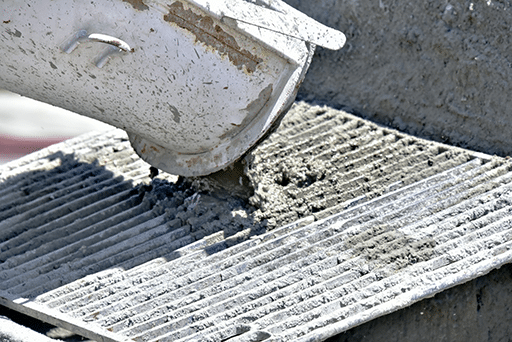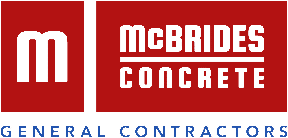
Concrete makes up the literal foundation of the modern world. Most modern buildings use concrete since it has multi-purpose properties. Concrete is strong, easily-produced, has great workability, and can be molded into any shape and lasts for decades. This makes concrete the ideal construction material for creating buildings and homes.
Did you know that not all concrete is the same? Different engineering applications have unique requirements for concrete. For example, one application might require the use of pervious concrete in high-risk flood areas. Other applications – such as bridges – require the use of high-strength concrete. McBrides Concrete, your premier Concrete Contractor in Columbia, TN, discusses the different types of concrete and shares their applications below.
Regular concrete
Regular concrete is the most common form of concrete used for regular structures. It is a mixture of cement, aggregate, and water. Mixed with the correct cement ratio, regular concrete can be very strong for normal applications. The normal setting time is usually 3-12 hours (depending on weather conditions) and full strength and durability is achieved at 28 days. With the right ratio and the right aggregate type (all the while considering that some shrinkage may occur), regular concrete can be very strong for most applications.
Reinforced Concrete
Reinforced concrete is concrete where strong reinforcements are added (usually rebar). This type of concrete is used where high tensile strength is required. Normal concrete’s compressive strength may be excellent, but it has poor tensile strength without additional reinforcement. Adding metal reinforcement increases the elastic modulus and thus increases the weight it can withstand, making for a stronger overall structure. Many concrete contractors use this type of reinforced concrete in building foundations, bridge spans, and any structures that bear heavy cargo traffic.
Stamped and Stained Concrete
Stamped and Stained concrete is concrete that is designed to be aesthetically pleasing. Design techniques such as staining and stamping allow this type of concrete to be a transformative choice for individuals who want a little creativity to shine through. Stamped and stained concrete gives the owner the ability to customize the look and feel of any project.
Pre-cast concrete
Pre-cast concrete is a structural element that is pre-cast/pre-built inside a factory or a batching plant. This type of concrete makes it possible to create building sections in a controlled environment so they can be easily shipped to the construction site. Most large construction projects utilize pre-cast concrete sections. Virtually any element of a building can be precast: walls, floor sections, solid concrete blocks, and foundations. Pre-production of precast concrete allows for consistent quality across all structural elements of a building. Using pre-cast concrete speeds up construction timelines, making it a great option for projects with a quick deadline.
Pervious Concrete
Pervious concrete is different from normal, solid concrete. It is designed to allow water to pass through it. This type of concrete has around 15% – 20% voids inside that make it more porous. Common applications using pervious concrete include driveways or pavements where flooding issues are considered.
Though most people see concrete as a common material used in construction, McBrides Concrete stresses the importance of knowing the uniqueness of concrete and its various uses. Contact expert concrete contractor, McBrides Concrete, to determine what concrete solution is best for your next project.
